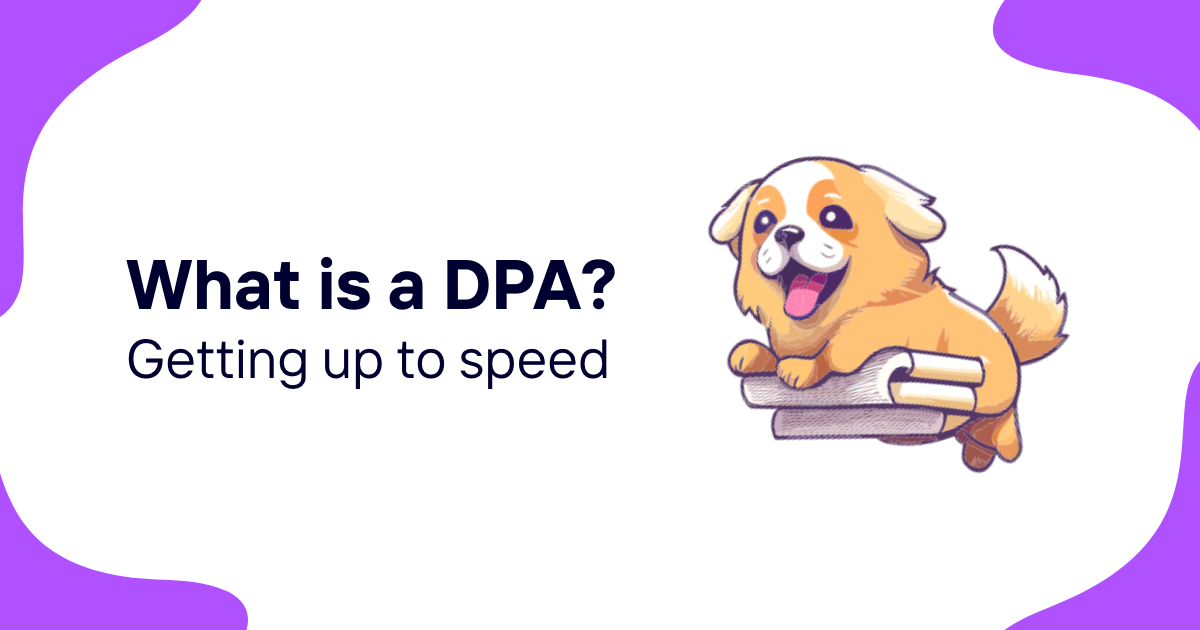Navigating the complex world of Data Processing Agreements (DPAs) can feel like a daunting task. Yet, it's crucial for your business to stay compliant, especially in today's digital age where data privacy is paramount. Understanding the ins and outs of DPA compliance not only protects your company but also builds trust with your customers.
Whether you're just starting out or looking to tighten your data protection practices, getting a grip on DPA compliance is a step in the right direction. Let's dive into what it means to be DPA compliant and why it's a non-negotiable for businesses handling personal data. With the right knowledge, you'll be well on your way to safeguarding your operations and maintaining customer confidence.
What is DPA Compliance?
In today's data-driven world, understanding DPA compliance is paramount for businesses. DPA, short for Data Processing Agreement, serves as the foundation for how personal data is handled, shared, and protected. When you're dealing with customer data, ensuring that your operations are in line with DPA guidelines isn't just a good practice; it's a necessity.
At its core, DPA compliance means adhering to a set of agreed-upon standards for data processing. These standards are designed to secure personal data against unauthorized access, use, or disclosure. Moreover, they emphasize the importance of transparency between data controllers (those who determine the purposes and means of processing personal data) and data processors (entities that process data on behalf of the data controller).
To be DPA compliant, your business must ensure:
- Data processing agreements are in place between you (the controller) and any third parties (processors) that handle your customer's data.
- You're using data in a way that's fair, lawful, and transparent.
- You have implemented adequate security measures to protect data from breaches and leaks.
Being compliant isn't simply about avoiding penalties. It's about building trust with your customers. They need to feel confident that their personal information is in safe hands. This trust is crucial to maintaining and growing your customer base in an era where data breaches are not just common but also highly damaging to brand reputation.
Navigating DPA compliance can be challenging, especially with variations in regional regulations. For instance, the European Union's General Data Protection Regulation (GDPR) is notably stringent, setting a high bar for compliance worldwide. Regardless of where your business operates, it's imperative to understand the specific requirements of the DPAs that apply to your business to ensure that your data handling practices are up to scratch.
Importance of DPA Compliance

In today's digital landscape, where personal data circulates more freely than ever, DPA compliance isn't just a legal formality—it's a cornerstone of digital trust. By adhering to data processing agreements, you ensure that your handling of personal information aligns with legal standards and ethical practices, safeguarding against breaches and unauthorized access.
Why DPA Matters
- Customer Trust: In an era where privacy concerns are skyrocketing, demonstrating compliance with DPA regulations shows your commitment to data protection. This transparency builds customers' trust, a critical asset in the competitive digital marketplace.
- Legal Requirements: Various jurisdictions, especially ones governed by GDPR, impose strict rules on data processing and handling. DPA compliance ensures you meet these legal obligations, avoiding hefty fines and reputational damage.
- Security Measures: Beyond legal compliance, adhering to DPA standards prompts you to implement robust security practices. These include encryption, access controls, and regular audits, which protect against data breaches and cyber-attacks.
Assessing Your DPA Readiness
Begin by evaluating your current data protection measures. Identify any gaps in compliance and strategize on how to bridge these. Remember, DPA compliance is an ongoing process, not a one-time effort. It requires continuous assessment and adaptation to evolving regulations and cyber threats. Engage legal counsel familiar with data protection laws to ensure your agreements are comprehensive and tailored to your specific operations.
Fostering a culture of data privacy within your organization plays a pivotal role, too. Training your employees on the importance of DPA compliance and secure data handling practices minimizes the risk of accidental breaches and enhances your overall data security posture.
By prioritizing DPA compliance, you're not just meeting regulatory demands—you're also positioning your business as trustworthy and reliable in the eyes of your customers. And in the digital world, trust is a currency as valuable as any other.
Key Elements of a Data Processing Agreement

When you're navigating the complexities of DPA compliance, understanding the key components of a Data Processing Agreement (DPA) is essential. A robust DPA not only ensures legal compliance but also secures trust between you and your data processors. Here's what your DPA must cover to safeguard your interests and those of your users:
Purpose and Scope of Data Processing: Your DPA should clearly define why and how personal data is being processed. This clarity helps in aligning processing activities with GDPR requirements and other privacy regulations.
Details of Data Being Processed: Specify the types of data being handled. Whether it's customer names, email addresses, or more sensitive data like health information, detailing this ensures both parties understand the extent of data protection needed.
Data Security Measures: Highlight the security measures in place to protect data. This includes encryption, access controls, and other technical safeguards. It's crucial for mitigating risks of data breaches and ensuring data integrity.
Roles and Responsibilities: Clearly distinguish between the data controller's and processor's roles. This delineation is vital for accountability and compliance.
Subprocessing Permissions: If your data processor needs to subcontract, your DPA must specify conditions for obtaining your prior written consent. This control is critical for maintaining the security and integrity of your data down the supply chain.
Term and Termination Conditions: Outline how long the data will be processed and the conditions under which the agreement can be terminated. This should also cover data return or deletion post-termination.
Legal Compliance and Auditing Rights: Include clauses that ensure adherence to relevant laws and regulations. Also, state your right to conduct audits or inspections to verify compliance with the DPA and applicable data protection laws.
These elements form the backbone of your Data Processing Agreement, ensuring that data processing activities meet legal requirements and safeguard user privacy. By clearly defining these aspects in your DPA, you pave the way for more transparent, secure, and compliant data processing practices.
Steps to Achieve DPA Compliance

Achieving DPA compliance isn't just a regulatory requirement; it's a crucial step towards safeguarding the privacy and security of your users' data. To navigate this process effectively, you'll want to follow a structured approach that covers all bases.
First, conduct a thorough audit of your data processing activities. Identify what data you're collecting, how it's being processed, and if it's being shared with any third parties. This initial step is essential for understanding the scope of your compliance efforts.
After your audit, draft or update your Data Processing Agreement (DPA). Ensure it clearly outlines the nature, purpose, and duration of the processing, types of data being handled, and the obligations of both parties. Remember, clarity here can prevent misunderstandings down the line.
Implement robust data security measures to protect the data you're handling. This includes encryption, access controls, and regular security assessments. With cyber threats constantly evolving, maintaining high-security standards is non-negotiable.
Training your staff on DPA requirements and data protection best practices is another critical step. Employees should understand their roles in maintaining compliance and how to handle data securely.
Lastly, regularly review your DPA compliance status. Laws and regulations can change, and so can your own data processing activities. An annual review, at minimum, ensures you remain compliant and adapt to any new requirements.
By following these steps carefully, you'll be well on your way to achieving and maintaining DPA compliance. Remember, it's about building trust and ensuring the privacy and security of user data, which ultimately benefits everyone involved.
Benefits of Being DPA Compliant

Understanding the benefits of DPA compliance is essential for businesses of all sizes. When you're DPA compliant, you're not just following regulations; you're also implementing practices that can profoundly impact your organization's reputation and operational efficiency.
Firstly, trust is paramount in the digital world. By adhering to DPA standards, you signal to your customers and partners that you take their data privacy seriously. This trust fosters stronger relationships, which are crucial for customer retention and attracting new business. In an era where data breaches are all too common, demonstrating your commitment to data protection can set you apart from competitors.
Another key advantage is reduced regulatory risk. Non-compliance with data protection regulations can lead to hefty fines and legal penalties. For instance, under GDPR, organizations can be fined up to 4% of their annual global turnover or €20 million, whichever is higher. By ensuring DPA compliance, you significantly lower the risk of such financial penalties.
Furthermore, DPA compliance promotes operational efficiency. By evaluating and restructuring your data handling processes, you can identify redundancies and improve data management. This streamlined approach not only simplifies compliance but also enhances decision-making and service delivery by ensuring that accurate, up-to-date data is always at your disposal.
In addition, focusing on data protection can lead to improved cybersecurity measures. Given that data breaches can have devastating consequences, a robust approach to data security is imperative. DPA compliance necessitates strong security protocols, thereby reducing the likelihood of data breaches and safeguarding your organization's reputation.
Here's a quick glance at the benefits of being DPA compliant:
- Builds trust with customers and partners
- Reduces regulatory risk and potential financial penalties
- Enhances operational efficiency and decision-making
- Improves cybersecurity measures and reduces the likelihood of data breaches
Embracing DPA compliance not only helps you meet legal obligations but also offers substantial business advantages.
Conclusion
Navigating the landscape of DPA compliance might seem daunting at first but it's an investment in your business's future. By embracing these standards, you're not just ticking a box for legal compliance; you're building a foundation of trust with your customers and setting your business apart in a crowded marketplace. The journey towards DPA compliance is a strategic move that enhances your operational efficiency and cybersecurity posture while protecting your company from potential financial setbacks. Remember, in today's digital age, data privacy isn't just a legal requirement—it's a competitive edge. Start your compliance journey today and watch your business thrive.












